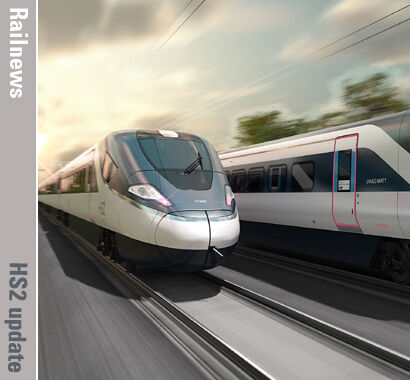Transport secretary Louise Haigh has raised hopes that the high speed link between Old Oak Common and London Euston could be back on the agenda.
She told the BBC that an announcement about the Euston section could be included in the budget speech on 30 October.
Ms Haigh said: ‘‘It would make absolutely no sense to build a £66 billion high-speed line between Old Oak Common and Birmingham. Even under the previous government’s chopped and changed and discredited plans for HS2, Euston was always going to be part of the solution.’
Meanwhile, Ms Haigh has been advised by the High Speed Rail Group that completing HS2 to Euston and also restoring the section between the West Midlands and Crewe, for which land has already been bought, could make the line much more valuable to a potential concession-holder.
The Group, which includes major contractors like Hitachi, Alstom and Siemens and is supported by the high speed rail lobby group Greengauge21, says the full route could be worth £20 billion to a leaseholder, but much less if the line only connects Old Oak Common with Birmingham, and that the difference could more than pay for the Euston section.
HS1 is already leased to a consortium of investors until 2040, although the Government is the ground landlord and the line itself has not been sold. A similar arrangement for HS2 could appeal to the Treasury.
The work at Old Oak Common towards Euston is currently on hold, pending a decision about the future of the link, but two tunnel boring machines have already arrived from Germany.
HSRG chair Dyan Perry is quoted by the Guardian as saying: ‘Short-term decisions to cut investment into infrastructure would be deeply damaging to the UK, creating uncertainty and jeopardising investor confidence.
’We strongly urge Treasury officials to carefully consider our recommendations and take action to ensure the UK can fully realise the benefits of a connected rail network.’
Meanwhile, Network Rail has announced a five-point plan to improve the present Euston, which was opened in 1969 but is now handling many more passengers than for which it was designed, leading to overcrowding. Performance problems on the West Coast Main Line can make matters worse, and one of Network Rail’s priorities is to improve the route.
The other four are a review of passenger information displays, better messages to passengers when trains are ready for boarding, increasing the amount of space on the concourse and easing pinch-points, and making sure that the various parties who contribute to the functioning of Euston work together more effectively.
Overhead advertising boards have already been switched off, while their future is assessed.
Network Rail West Coast South route director Gary Walsh said: ‘Our five-point plan will help improve things for passengers in the short term by creating more space, providing better passenger information, and working as an industry to improve the reliability of train services on the West Coast Main Line.’


